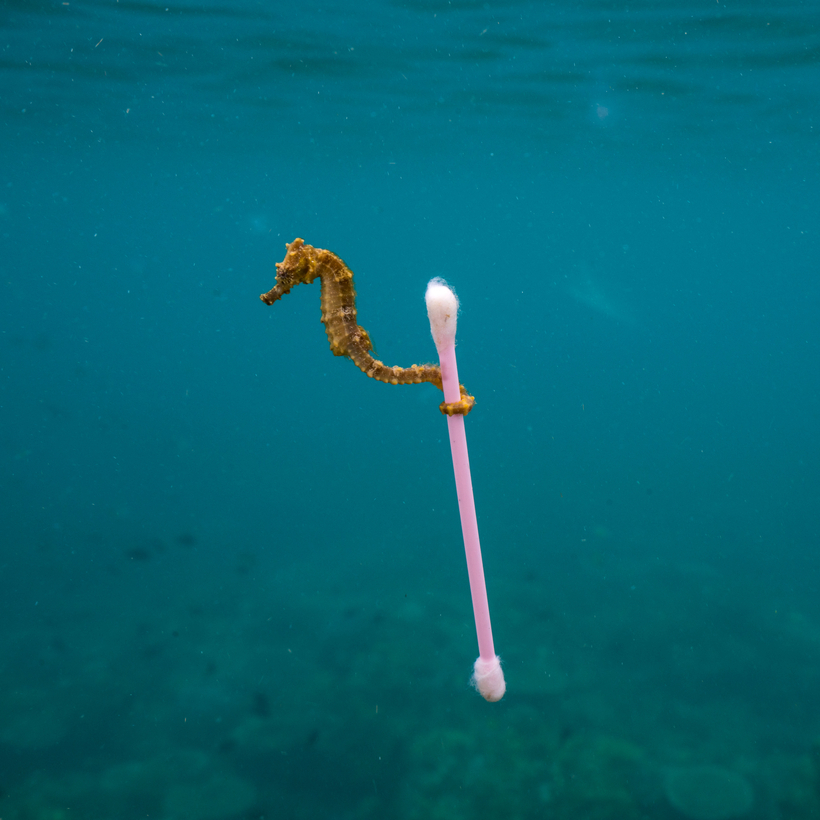Plastic pollution is being deposited into the fossil record, research has found, with contamination increasing exponentially since 1945.
Scientists suggest the plastic layers could be used to mark the start of the Anthropocene, the proposed geological epoch in which human activities have come to dominate the planet. They say after the bronze and iron ages, the current period may become known as the plastic age.
The study, the first detailed analysis of the rise in plastic pollution in sediments, examined annual layers off the coast of California back to 1834. They discovered the plastic in the layers mirrors precisely the exponential rise in plastic production over the past 70 years.
The plastic layers could be used to mark the start of the geological epoch in which human activities have come to dominate the planet.
Most of the plastic particles were fibres from synthetic fabrics used in clothes, indicating that plastics are flowing freely into the ocean through waste water.
“Our love of plastic is being left behind in our fossil record,” said Jennifer Brandon, at the Scripps Institution of Oceanography at the University of California San Diego, who led the study. “It is bad for the animals that live at the bottom of the ocean: coral reefs, mussels, oysters and so on. But the fact that it is getting into our fossil record is more of an existential question.
“We all learn in school about the stone age, the bronze age and iron age – is this going to be known as the plastic age?” she said. “It is a scary thing that this is what our generations will be remembered for.”
Sir David Attenborough, whose Blue Planet 2 TV series raised the profile of plastic pollution in the ocean, said in July attitudes were changing. He predicted polluting the planet would soon provoke as much abhorrence as human slavery.
The research, published in the journal Science Advances, found that since the 1940s the amount of microscopic plastics in the sediments has doubled about every 15 years. In 2010, the most recent year analysed, the pollution had reached almost 40 particles per 10cm by 10cm patch of ocean floor every year.
Sir David Attenborough predicted polluting the planet would soon provoke as much abhorrence as human slavery.
Two-thirds of the particles were plastic fibres, a fifth were broken-down fragments of other plastic and a 10th were plastic film. “It is a very clear signature,” Brandon said. “Plastic was invented and pretty much immediately we can see it appear in the sedimentary record.”
A study in 2016 showed a single clothes wash could release 700,000 microplastic fibres. “They are definitely not being disposed of properly,” Brandon said. “We are not filtering them out properly at household or waste treatment plant level. I think that is the next big frontier: what are we doing about our waste water and what we make our clothes out of, because clearly [the plastic] is washing straight into the ocean?”
Many millions of tonnes of plastic are discarded into the environment every year and are broken down into small particles and fibres that do not biodegrade. Microplastics have been found everywhere from the deepest oceans to high mountains and even the Arctic air, showing pervasive pollution of the planet.

Research is limited but eating plastic is known to harm marine creatures. Humans are believed to consume at least 50,000 microplastic particles a year through food and water. The health impact is unknown but microplastics can release toxic substances and may penetrate tissues.
The latest research analysed a sediment core taken more than a mile offshore from Santa Barbara and close to the 4 million people that live in Los Angeles. This basin is naturally devoid of oxygen due to local current patterns, meaning there are no animals burrowing into the sediments and destroying the delicate annual layering.
The 36cm-long core was originally taken to assess fish populations over time. It had been wrapped in a plastic liner, but the scientists used a laser signature to identify this specific type of plastic and discount the small amount of contamination from their analysis.
The core was taken in 2010 but Brandon said there was no reason to think the exponential rise in plastic pollution had been curbed since then, as plastic production continued to rise.
“I hope our study shows this is a very serious problem,” she said.

